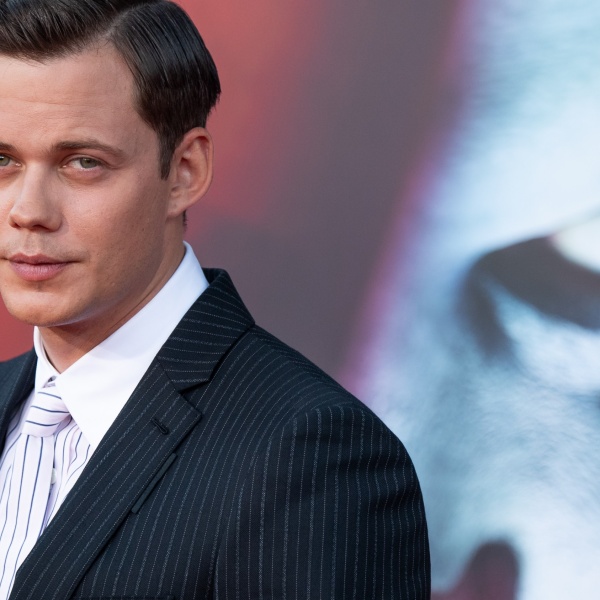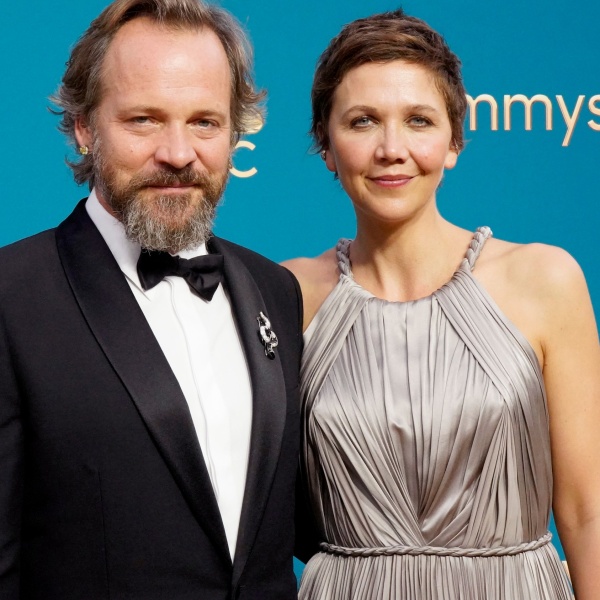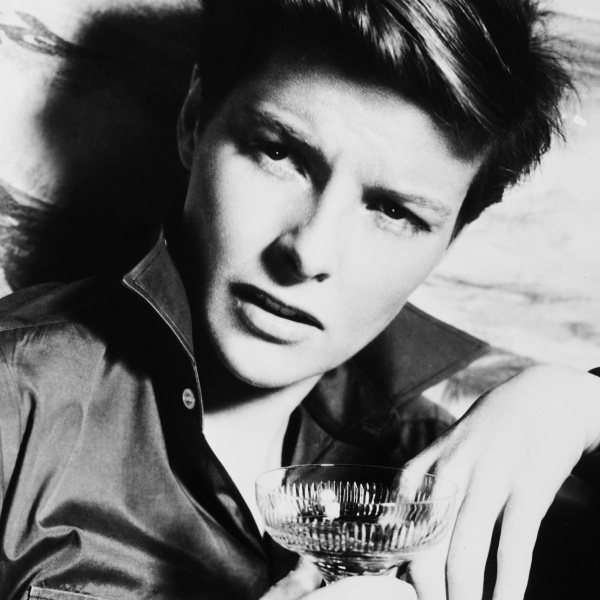
This article is part of IndieWire’s 2000s Week celebration. Click here for a whole lot more.
In 2002, author Rosalind Wiseman published a self-help book entitled “Queen Bees and Wannabes,” aimed at helping parents of high school-aged girls deal with the vicious effects of bullying on their daughters. Wiseman could not have possibly predicted what came next: that Tina Fey would a) read the book, b) see some of her own high school experience reflected back to her, and c) call up Lorne Michaels and suggest the non-fiction book would make a banger of a high school comedy. Some people have all the luck, don’t they?
What Fey saw in Wiseman’s relatively dry book was timeless — there have always been instances of “girl on girl crime,” and they sure as hell weren’t stopping — but when the comedic icon turned Wiseman’s work into the enduring early aughts offering “Mean Girls,” she set a brand new standard for what Mean Girl Cinema could be. Funny, scary, sad, painful, and most definitely fetch, the 2000s were the pinnacle of Mean Girl Cinema as both its own subgenre and as a larger avenue for big screen catharsis.
As we reflect on the decade that was in our 2000s Week package, it seemed silly not to dive into one of our favorite — and enduring — slices of cinematic (very recent) history. Looking back on the Mean Girl Cinema of the decade, a number of trends emerged that seemed worthy of the taxonomy treatment.
For one, while “mean girls” can certainly become mean women, the mean-girl-as-Godzilla trend of the aughts was mostly confined to high school stories, the kind that “Mean Girls” perfected. A few of these films even turned the idea of who is the mean girl in question on its head: “Bring It On” may expect we’re going to be on the Toros’ side because they serve as our primary point of view (and because Kirsten Dunst’s Torrance is unquestionably our protagonist), while “Lost in Translation” feels different with each viewing (is Anna Faris’ Kelly the Mean Girl because she’s silly? is Scarlett Johansson’s Charlotte because she’s judging? are we the audience because we’re judging?). Some of these stories of basic bullying offer a still-darker cast, as with “A Walk to Remember,” which forces us to ponder: who in God’s name makes fun of a kid with cancer?
Ahead, those (and more!) ruminations on our favorite subgenre — it’s not like a regular subgenre, it’s a cool subgenre — of the era, and what we might continue to learn from being mean, playing nice, and everything in between.
High School Drama
“The Princess Diaries” (2001)
Mandy Moore: our preeminent Mean Girl of the early aughts? Consider! While Garry Marshall’s delightful Meg Cabot adaptation boasts all manner of highlights, from Anne Hathaway’s charming performance as the titular princess to Marshall refreshing his own “Pretty Woman” formula for the younger set, Moore’s work here as the deeply mean Lana Thomas endures. Blond, pretty, and aggressively into cheerleading, Lana is a classic example of a Mean Girl, made sparky and modern by Moore’s go-for-broke work, which she’d only best three years later in another contemporary classic, but we’ll get there soon.

“A Cinderella Story” (2004)
What’s a Cinderella story without some evil stepsisters? Mark Rosman’s Hillary Duff-starring spin on the ye old tale of woe includes not only mean step-siblings (Madeline Zima and Andrea Avery Ray, doing a tremendous amount with matching Juicy velour sweatsuits), but even a Mandy Moore-coded bully in the form of (of course) popular cheerleader Shelby (Julie Gonzalo). As is required by the demands of this classic fairy tale, they all get their comeuppance, by way of both demeaning jobs and big-time romantic dumpings. This may be the least believable of all our High School Dramas, but who cares when it feels this good?
“Saved!” (2004)
Mandy Moore is back, and now armed with righteous (read: conservative Christian) indignation. While Lana Thomas works well as a prototypical Mean Girl, just three years after “The Princess Diaries,” Moore slipped back into bullying with the role of Hilary Faye Stockard, finding new dimensions for the bullying baddie who believes she’s doing evil for Jesus. Hilary Faye is one of our most vicious Mean Girls of the decade, and the gusto with which Moore approaches the role (just two years after playing, yes, a Nice Girl with her own love of Jesus backing her) is hilarious, inspiring, and more than a bit scary.

“Sisterhood of the Traveling Pants” (2005)
While the four besties at the center of Ken Kwapis’ adaptation of Ann Brasheres’ very popular YA series deal with all manner of high school-aged tribulations, only one of them follows a traditional bullying arc. That’s the story that belongs to Carmen Lowell (America Ferrera), who spends her summer visiting her father (Bradley Whitford) and his exceedingly white-bread soon-to-be-step-family. Carmen is made to feel an outsider from the start, and none of that is eased by Mean Woman in Chief, Nancy Travis as her soon-to-be-stepmother Lydia. While the deeper problems behind Carmen and her dad’s problems are myriad, Lydia only makes them worse (even Mean Girli-ing Carmen in conversation with one of her mom-aged friends, a real high school move to pull when you’re meant to be the bigger, older, wiser person). Some things never change.
“Hairspray” (2007)
We may have first met Amber Von Tussle (and bonus Mean Girl Mom, Velma Von Tussle) in John Waters’ stone-cold 1988 cult classic “Hairspray,” but these bitter baddies got new life in Adam Shankman’s 2007 musical remake. With Michelle Pfeiffer and Brittany Snow cast in the roles for the touched-up hit, the Von Tussle legacy of being very mean, very cunning, and not actually very good at dancing found fresh life. While Snow beautifully channels all of Amber’s anxious whining, Pfeiffer makes her Velma even more devious than Debbie Harry’s initial take on the role, instead leaning into not just Velma’s simmering jealousy and latent racism, but even attempting to seduce no less than Christopher Walken in one of the film‘s most outrageous scenes. Never fear: they get their comeuppance, in delightful roach shape.
Wait, Are We the Bad Guys?
“Bring It On” (2000)
Stay with us here. Peyton Reed’s 2000 feature about the ins and outs of competitive high school cheerleading is an enduring offering of the high school movie genre for many, many reasons, one of which also happens to be the exceedingly canny ways in which it deals with its Real Mean Girls. We love the Toros. We root for the Toros. We want the Toros to win! And yet, we also understand that in order for the Toros to succeed (at cheerleading and in life), they need to face up to the facts: they aren’t the heroes in this story, at least not at first. Sure, we can blame the swiping of the very talented rival sward the Clovers on Big Red (Lindsay Sloane), but she’s just part of the greater forces of evil that pushed the Toros into such nefarious spaces. The key to breaking free? Recognizing your part in Being a Mean Girl, and doing your damndest to change it next time (Spirit Sticks help).

“Freaky Friday” (2003)
A theory: the true Mean Girl of Mark Waters’ 2003 spin on the classic “Freaky Friday” mythos is not actually Julie Gonzalo (our “Cinderella Story” Mean Girl!) as Stacey Hinkhouse, who enjoys some run-of-the-mill bullying of her former BFF Anna (Lindsay Lohan), but Anna herself. We’re not without sympathy here, because Anna’s life is fraught (dead dad, remarrying mom, Stacey, big crush on Chad Michael Murray, inevitable body swapping drama), but Anna is so mean to her own mother (Jamie Lee Curtis), that we can’t help but pray that something massive comes along to shake her bad tendencies loose. Enter: said body swapping drama. Hey, if it works!
“Lost in Translation” (2003)
Rumors as to the part’s inspiration aside, no other entry in this run of Mean Girl Cinema has so shifted in this writer’s estimation and interpretation than Anna Faris’ turn as the ditzy Hollywood It Girl Kelly. While her high-kicking and even higher-screeching scene in Sofia Coppola’s perfect film is absolutely awash in Mean Girl signals — the way she overlooks Charlotte (Scarlett Johansson) until the very last possible second, instead fawning all over her husband John (Giovanni Ribisi) in front of her is ripped from some Mean Girl Official Handbook somewhere — the more you watch, the more you can’t escape Charlotte’s cruelly appraising side-eye. Kelly may be annoying (and smelly?), but this single scene is much more concerned with showing us another side of Charlotte, the kind that, as John tells her, is dedicated to “pointed out how stupid everybody is all the time.” We don’t see Kelly again, but we do have to spend the rest of the film seeing Charlotte in a new light.

“13 Going on 30” (2004) and “She’s the Man” (2006)
Something similar happens in both “13 Going on 30” and “She’s the Man,” a pair of enduring mid-aughts comedic gems — yes, really — that also center actual mean girls. Both hinge on zippy concepts (time travel and modernized Shakespeare, respectively) that eventually push their leading ladies into profound moments of personal reflection. Jenna Rink (Jennifer Garner)! Sweet girl, makes some very bad choices! Viola Lennox (Amanda Bynes)! Incredibly funny gal, guilty of gaslighting by way of pretending to be her brother! And yet, both of these twists on Mean Girl antics lead our ladies to make some important changes in their lives (Jenna goes back in time and does things right, Viola goes back to being herself and gets to kiss Channing Tatum), providing the best possible outcome for learning the Mean Girl Way: becoming a Nice Girl and finding that its own reward.
OK, That’s Too Mean
“A Walk to Remember” (2002)
On occasion, Mean Girl Cinema went too far. Mandy Moore may have given us too sterling examples of meanies in action, but during this same decade, she also embodied one of the most tragic examples of Mean Girl Victim. Jamie Sullivan has a lot working against her: she’s kind of a dweeb, she’s a bad dresser, she doesn’t have many friends, she keeps to herself, and she’s the preacher’s daughter. That’s all fine grounds for bullying in the traditional America high school, but even before we learn the real issue of Jamie’s young life (she has cancer), the Mean Girls are way too mean. That includes Lauren German as Belinda (partially fueled by jealousy over Jamie’s apparent connection to Shane West’s Landon Carter) and Paz de la Huerta as Tracie (who just seems to be a bully for the “fun” of it), who cook up some fake revenge porn before such a thing was even in the mainstream. Yes, of course, the duo (and their male friends, let’s not let anyone off the hook because of sexism) eventually see the error of their ways and make it up to Jamie and Landon, but their original cruelty endures, reminding us that even this fun and frisky subgenre has its darker edges.

“Thirteen” (2003)
Speaking of the edgier bits of Mean Girl Cinema, few films do as much work to remind us the terrifying limits of the moniker than Catherine Hardwicke’s seminal “Thirteen.” Nikki Reed’s Evie Zamora follows a traditional enough arc, at least at first, bullying and teasing Evan Rachel Wood’s Tracy Freeland for her clothing and attitude. As Tracy alters herself to be more “cool,” she and Evie become extremely close pals, ultimately tumbling into the dark, darrrrrk sides of young teenagehood (sex, drugs, crime, and more) together. What’s the worst thing that could happen at the hands of a Mean Girl? Well, this.
“Speak” (2004)
An often-overlooked entry into the canon, Jessica Sharzer’s adaption of the beloved Laurie Halse Anderson novel deserves a place of prominence in the most bitter bits of Mean Girl Cinema. Featuring a young Kristen Stewart in a pre-“Twilight” turn, “Speak” does solid work in further interrogating the true price of bullying. Stewart’s Melinda Sordino enters under a dark cloud, and it’s only by way of further bullying (much of it care of her ex-best friend Rachel and new-friend-turned-enemy Heather) that we learn the full extent of what’s happened to her and why she’s now such an easy mark for those around her. Like “Thirteen,” “Speak” takes on the Mean Girl phenomenon in the spirit of which it was originally intended: to help and to heal.
Over a decade out from the end of the early aughts, and Mean Girls Cinema continues to wield its well-manicured hands all over movies aimed at the teenage girl set (and those who never quite grew out of it). “Mean Girls” the movie eventually spawned a very popular Broadway musical that, in turn, spawned a movie adaptation that hit the big screen earlier this year, twenty years (open the crypt!) after Waters’ original film.
As faithful as that version, directed by Samantha Jayne and Arturo Perez Jr., proved to be, it did make one change: the film ends with Cady and Regina making up, but with both of them acknowledging their mean girl misdeeds. Maybe even the most classic of Mean Girls really can change.







